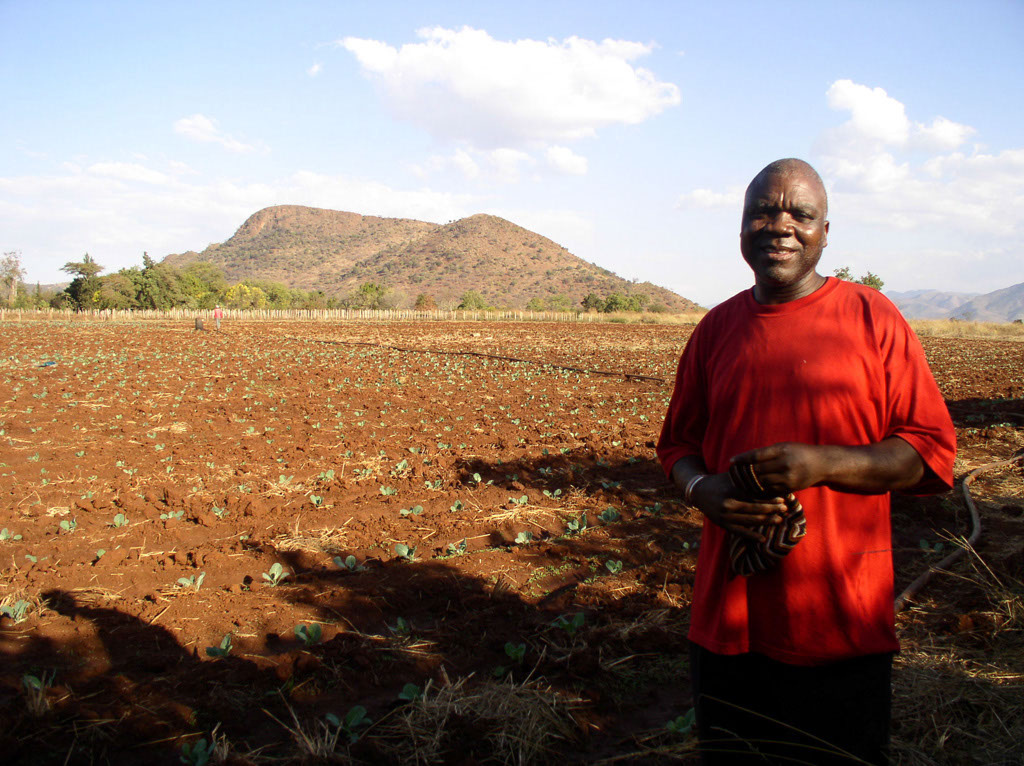The subcontinent has lots of groundwater, but most farmers cannot get to it.
For millions of smallholder farmers in sub-Saharan Africa (SSA), access to sufficient water for agriculture is a big challenge. There may be plenty to go around during the rainy season, but when the downpours stop things get a lot tougher. So, smallholders are highly dependent on seasonal cropping. This also makes them extremely vulnerable to droughts and uneven weather patterns.

Experts estimate that only 3% of groundwater resources of SSA are used for irrigated agriculture. This figure comes as something of a surprise, given that groundwater is abundant, renewable and ideal for small-scale irrigation in many areas. Efforts to boost agricultural production for an African Green Revolution will be heavily dependent upon small-scale interventions, and the use of groundwater must feature prominently if that is to be realized. Improved irrigation capabilities could unleash smallholder farming and make it a major driver of economic growth, poverty reduction and improved food security. So, why is groundwater so underused?
Now, a special issue of the journal, Water International, published in two parts and edited by Paul Pavelic, Karen Villholth and Shilp Verma, scientists from the International Water Management Institute (IWMI), seeks to answer this question. The special issue provides a comprehensive analysis of the challenges of intensifying groundwater irrigation (GWI) in SSA for improving smallholder livelihoods.
“We see groundwater irrigation strategies already emerging and farmer-driven development gaining recognition as a feasible alternative to state-directed irrigation in improving livelihoods,” says Paul Pavelic, IWMI researcher and co-editor of the special issue. “Studies such as these are useful to inform and guide further development in the right direction.”
Tapping into groundwater requires a major shift in irrigation practices, say the editors. Infrastructure and equipment, such as pumps and pipes, are needed. Even more fundamental, however, are policies and strategies to catalyze change.
Please fence me in
Despite emerging strategies, why is it that so many sub-Saharan farmers do not irrigate, even when groundwater is plentiful? The main reasons for this are perhaps obvious: lack of capital for pumps and wells, poor market access, labor shortages, etc., and in particular cases, high returns can be achieved from cash crops under rainfed conditions. However, sometimes the constraints are surprising. In a survey conducted in the Iullemmenden Basin in Niger (included in the special issue of the journal), a research team led by Bio Mohamadou Torou, consultant with IWMI, found that the most frequent issue mentioned by farmers as a barrier to irrigation investment was the lack of the basic tools of production, including fences. Livestock wander freely around this semi-arid landscape and, without fences, household gardens offer cattle a tasty snack. Researchers suggest a range of options to help address this problem.
However, each region has its own challenges. So, the various authors of the articles in the special issue cover a broad spectrum of topics, including financial viability of groundwater irrigation, gendered adoption patterns, and current policy and institutional barriers.
GWI by smallholder farmers is expanding more rapidly than previously thought throughout SSA and, in recent years, has mirrored the situation observed in India in the early stages of the Green Revolution, according to Karen Villholth, IWMI, in the first article in this special issue. However, she concludes that a number of issues remain.
Give farmers some credit
“We see high economic barriers, which means that the poorest farmers are simply unable to adopt and benefit from GWI,” says Villholth. “Therefore, we must pay increased attention to micro-credit and financing schemes. We need a mix of both direct investments and subsidies.”
Community engagement and local management of land and water resources are important. Building on existing organizations, such as farmer groups or farmers’ cooperatives, might be the right step to ensure long-term viability. Cooperatives have the power to assist farmers with marketing of produce, and negotiation for grants and policy change. Willem Colenbrander and Barbara van Koppen come to similar conclusions. The researchers found that the supply chain for pumps in Zambia is limited, mainly because goods and services are highly centralized. Most rural smallholders, of course, live far from the cities. Furthermore, information about pump costs and maintenance is not widespread. The existing disproportions, however, could be addressed by providing smallholders with the necessary information on available pumps and also access to these pumps, for instance, through farmer’s unions.
“Governments have to realize their dual role as facilitator as well as regulator in the development of groundwater irrigation in SSA and across relevant sectors,” concludes Villholth. “Understanding the groundwater resources and its users and managing them require up-front attention and integration into policy and decision making. This becomes more critical as larger shares of groundwater are being taken for agriculture.”
“Taken together, the papers in this collection paint a picture that is not only complex and heterogeneous across regions, but also sometimes contradictory,” says Pavelic. “All of these aspects serve to test the existing paradigm on groundwater irrigation, enrich the discourse and help to understand the range of barriers along the pathways toward the sustainable adoption of groundwater irrigation – but also that, even without help, the farmers are going down those paths.”
[fancy-ul style=”arrow-type1-list” variation=”blue”]
- Water International, Volume 38, Issue 4, 2013: Special Issue: Sustainable Groundwater Development for Improved Livelihoods in Sub-Saharan Africa, Part 1
- Water International, Volume 38, Issue 6, 2013: Special Issue: Sustainable Groundwater Development for Improved Livelihoods in Sub-Saharan Africa, Part 2
[/fancy-ul]
These special issues of the journal, Water International, contain 14 research papers, which were produced from studies funded by the Rockefeller Foundation and the Bill & Melinda Gates Foundation, and led by the International Water Management Institute (IWMI).
[hr top=”yes”/]
About the author:
Anna Deinhard is a Communications Fellow at the International Water Management Institute (IWMI).

